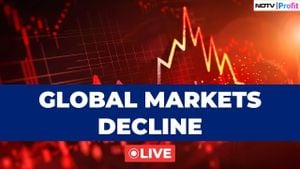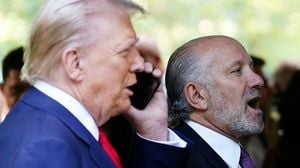Goldman Sachs, the renowned investment bank, has recently revised its forecast on the probability of a U.S. recession, lowering it from 25% to 20%. This decision stems from encouraging economic data, particularly related to retail sales and jobless claims, which suggest the U.S. economy may be more resilient than anticipated.
Earlier this month, Goldman Sachs had raised its predictions, citing disappointing job growth indicated by July’s jobs report, which only showed 114,000 new jobs instead of the expected 185,000. But the latest data has changed the narrative, reflecting overall economic strength and improved consumer spending.
Retail sales for July saw a surprising increase of 1%, outpacing expectations of just 0.3%. This surge suggests consumers are spending more, and it came alongside lower-than-expected weekly claims for unemployment benefits, indicating fewer people are losing jobs.
Jan Hatzius, Goldman Sachs’ chief U.S. economist, expressed optimism about the economy's direction. He stated, "We have now shaved our probability from 25% to 20%, mainly because the data for July and early August shows no sign of recession.\"
Goldman Sachs is eagerly waiting for the upcoming jobs report set to be released on September 6. Should this report present positive results, the firm might even revise the recession probability down to 15%.
This optimistic outlook isn’t just limited to Goldman Sachs; other experts are having similar sentiments. Rashmi Garg from Al Dhabi Capital echoed the belief of a probable 0.25% rate cut by the Federal Reserve, should economic conditions remain favorable.
The strong economic reports have instilled confidence among investors, leading to what has been termed as the best week for stocks so far this year. Retail giants like Walmart have reported positive sales numbers, providing evidence of increased consumer spending, particularly on essentials.
Interestingly, economic indicators such as the Sahm rule, which gauges shifts in unemployment rates to signal potential recessions, have not unfolded as expected. Claudia Sahm, the rule's creator, noted the current indicators do not suggest the U.S. is heading toward any imminent recession.
Retailers, especially those approaching the busy holiday shopping season, are paying close attention to consumer spending patterns. The latest data indicates shoppers are agile, gravitating toward everyday essentials like food and beverages rather than discretionary items like summer clothes or leisure goods.
Goldman’s revision of economic forecasts reflects increasing consumer sentiment noted by S&P 500 executives. Data points out less than 5% of S&P companies referred to recession during second-quarter earnings calls, compared to over 25% earlier this year.
The adjustment also emphasizes the importance of upcoming economic indicators. If employment data holds strong, Goldman Sachs anticipates clarity about future Federal Reserve interest rates.
Looking forward, Goldman forecasts the possibility of the Federal Reserve lowering interest rates to counteract challenges posed by inflation. Analysts remain divided on whether the upcoming reports can maintain this optimistic outlook or stir concerns again.
Each passing week, economic conditions have remained remarkably stable, and there is cautious optimism about the overall direction of the economy. The retail sector's resilience plays a pivotal role, as consumer health appears to have strengthened over recent months.
Despite these positive indicators, some economists remain vigilant. They caution about potential disruptions from geopolitical events or shifts within the labor market, which could alter the current economic picture.
Overall, the recent trends do signal hope, but analysts advocate for continuous monitoring. The upcoming jobs report and the Fed’s decisions will be key as the nation navigates through complex economic landscapes.
The dual nature of economic data, where both positive and negative indicators coexist, requires careful analysis. It emphasizes the nuanced views economists hold as they gauge the vitality of the economic environment and what it signifies for the future.



